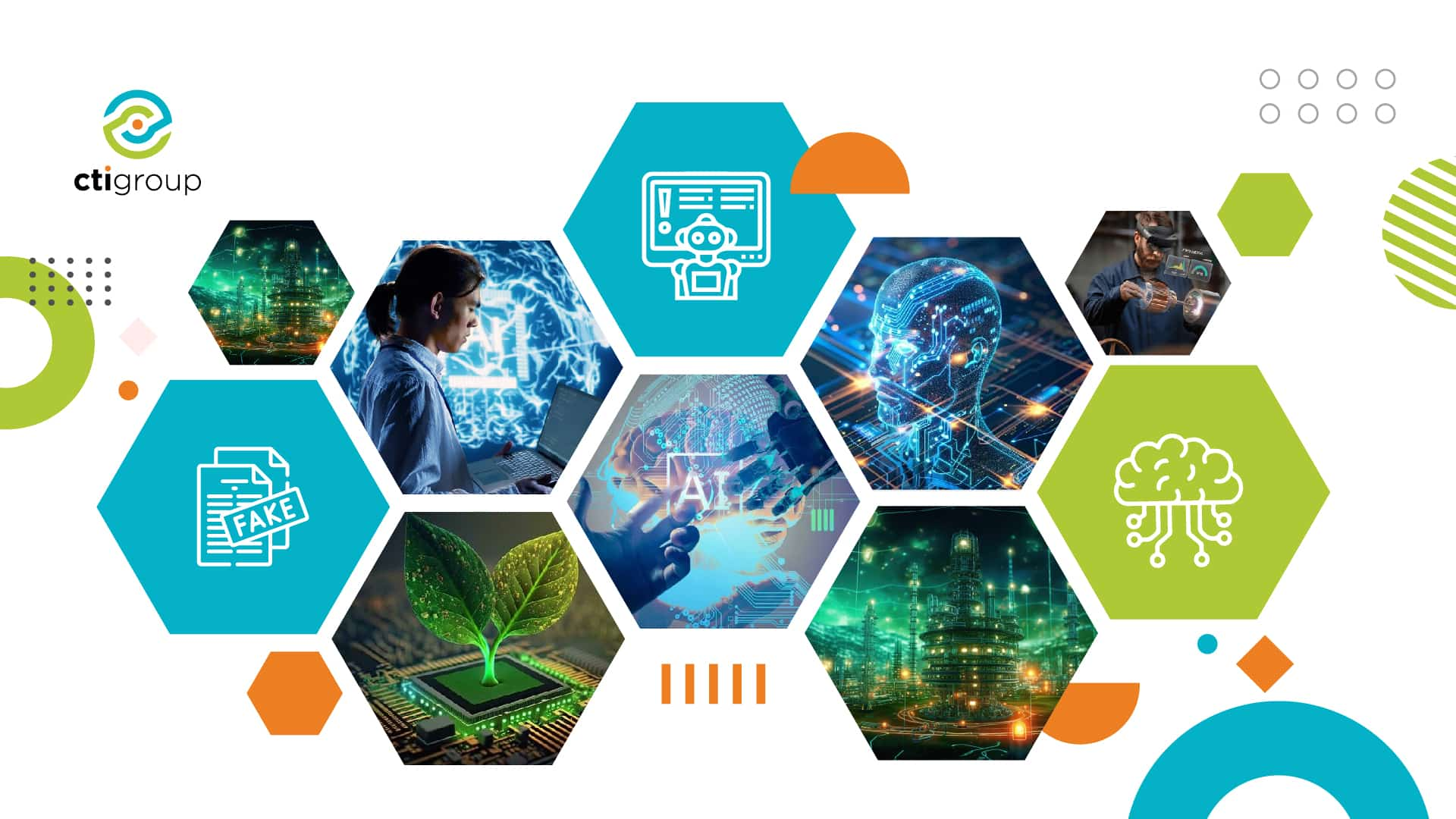Every year, technology evolves to deliver innovations that change the way we work, communicate, and compete in the marketplace. As we look to 2025, new technology trends are predicted to emerge that will not only create great opportunities but also challenge businesses to adapt continually. According to Gartner, these 10 strategic technology trends will be the key catalysts for the coming digital transformation. Read more in the article below.
Exploring Gartner’s Overview of the Top 10 Technology Trends in 2025
In an era of ever-evolving digital transformation, the emergence of new technology trends is key for businesses to address challenges while capitalizing on future opportunities. Gartner’s Technology Trends 2025 serves as a strategic guide for businesses looking to stay relevant amidst dynamic change.
Gartner group’s 10 key technology trends into three broad themes that reflect a focus on innovation and adaptation, namely
- AI Opportunities and Risks
- Computing Technology Trends
- Human-machine synergy
Below is a full explanation of each of these themes.
AI Opportunities and Risks

Advances in AI technology present great opportunities to drive innovation across multiple business sectors. But with every opportunity comes challenges that must be managed wisely. Here are three key AI trends to watch.
1. Agentic AI
AI technology that can autonomously design and execute actions to achieve user-defined goals.
- Business benefits: Helps improve efficiency with a virtual workforce that can reduce workload, support human roles, and augment traditional applications.
- Challenges: Close oversight is needed to ensure that AI operates within the context of organizational goals and values.
2. Platform for Responsible AI Management
A solution that helps businesses ensure their AI systems operate in accordance with ethical, legal, and operational principles.
- Business benefits: Ability to manage AI use policies, operational transparency, and lifecycle management of AI models for increased trust and accountability.
- Challenges: AI standards and regulations vary by region and industry, making creating consistency a major challenge.
3. Technology to Counter Disinformation
New innovations to detect and manage trust in different contexts, helping to counter the spread of false information.
- Business benefits: Reduce the risk of fraud, protect accounts from being taken over, and protect corporate reputation by identifying narratives that could be harmful.
- Challenges: Requires an adaptive approach and layered systems to deal with evolving threats.
The Development of Computing Technology
Computing technology continues to evolve, providing more sophisticated ways to process and protect data. These innovations not only increase efficiency but also create new opportunities for businesses to adapt to future challenges. Here are the key trends to watch.
4. Encryption Ready for the Age of Quantum Computing
Data security solutions are designed to address the threat of increasingly sophisticated quantum computing capabilities.
- Business Benefits: Protect sensitive information from potential future decryption threats.
- Challenges: New algorithms cannot directly replace old ones. The migration process requires testing, customization, and possibly rewriting applications to be compatible.
5. Ambient Invisible Intelligence Technology
Technology that blends naturally into the environment, creating a more intuitive and efficient experience.
- Business Benefits: Enables real-time monitoring and tracking at low cost, improves operational efficiency, and tracks the identity and ownership of objects with a high degree of authenticity.
- Challenges: User privacy is an important concern. User consent is required, and some may choose to disable this feature to protect their privacy.
6. Energy Efficient Computing
This approach focuses on energy efficient hardware, algorithms, and architectures, and uses renewable energy for operations.
- Business benefits: Reduce carbon footprint, meet sustainability requirements, and enhance corporate reputation for environmental responsibility.
- Challenges: Requires large investments in hardware updates, cloud services, and staff training. Transition can also be complex and costly, with potential increases in renewable energy prices.
7. Hybrid Computing for Complex Solutions
This approach combines compute, storage, and networking technologies to solve high-performance challenges.
- Business benefits: Supports innovation with advanced AI, efficient automation, and real-time personalization at scale. Technology even enables the human body to be used as a computing platform.
- Challenges: Still in the development stage with a high level of complexity. Requires specialized expertise for implementation, as well as good coordination to manage security risks and modular integration.
Human and Machine Synergy

Technologies that integrate human and machine capabilities are bringing the physical and digital worlds closer together. These innovations are creating more seamless and immersive experiences in various aspects of life, opening new opportunities for greater efficiency and interaction. Here are three key trends.
8. Spatial Computing for Interactive Digital Experiences
This technology combines VR and AR reality to digitally enrich real-world experiences.
- Business benefits:
- Satisfy consumer demand for immersive experiences in areas such as gaming, education, and e-commerce.
- Support advanced visualization for decision making in healthcare, retail, and manufacturing.
- Challenges:
- HMD-like devices are still expensive, difficult to use, require frequent charging, and can isolate users.
- Complex user interfaces, as well as privacy and data security concerns, are barriers to adoption.
9. Flexible Multifunctional Robots
This new generation of robots is designed to perform a variety of tasks and easily switch between functions, depending on business needs.
- Business benefits:
- Improved operational efficiency, faster ROI, and easy installation without major infrastructure changes.
- These robots can replace or work alongside humans, supporting collaboration across industries.
- Challenges: The robotics industry still lacks clear standards for price and minimum functionality, making wider adoption difficult.
10. Neurological Enhancement Technology
These technologies read and process brain activity to enhance human cognitive abilities, supporting deeper human-machine interactions.
- Business benefits:
- Enhance human capabilities, create more personalized training, and help older workers stay active.
- Enable new innovations in workplace safety and next-generation marketing.
- Challenges:
- High initial cost, limited battery life, and suboptimal wireless connectivity.
- Invasive risks, ethical challenges, and security threats, such as possible manipulation of reality perception through user-brain-machine interface (UBMI) and brain-body-machine interface (BBMI) technologies.
How Can Business Capitalize on Technology Trends in 2025?
From the above discussion of Technology Trends 2025, businesses can leverage the picture to drive strategic transformation, create competitive advantage, and strengthen operational sustainability. Here are some key steps that can be taken.
Leverage Technology Trends for Strategic Transformation
Leverage insights from past trends to drive strategic change in your business. By understanding emerging technologies, organizations can develop relevant innovations to address future challenges.
Align Technology Direction with Business Vision
Ensure that your technology deployment plan aligns with your company’s digital goals. Trends such as AI and human-machine synergy can be leveraged to improve efficiency, customer experience, and accelerate digital transformation.
Adapt Business Models to New Technologies
New technologies may require adjustments to the way businesses operate. For example, companies may deploy multifunctional robots to speed up processes or use energy-efficient computing for cost efficiency and sustainability.
Design Business Strategy Based on New Technologies
Use these trends as a guide to develop long-term strategies. Investing in technologies such as quantum computing or AI can have a big impact on maintaining a competitive position in the marketplace.
To effectively adopt these technology trends, companies also need to understand the challenges and market conditions in which they operate. In Indonesia, purchasing power is often an important factor in a company’s ability to adopt new technologies.
Large companies are generally better equipped to invest in new technologies, while small businesses often face budget constraints. However, cloud-based solutions and SaaS subscriptions now offer a more affordable alternative.
Another important step is to improve digital literacy and expand access to technology through government support and collaboration with the private sector. With this approach, more businesses can take advantage of global technology trends to improve their competitiveness and drive growth in the digital economy.
Also Read: 5 Technologies for Business to Boost Digital Transformation
CTI Group Becomes a Trusted Partner in Digital Transformation 2025
CTI Group is committed to being a leader in the adoption and application of the latest technologies. Our focus on innovation and digital transformation enables us to empower businesses across industries to remain competitive amidst rapid change.
As a leading cloud and digital solutions provider in Indonesia and Southeast Asia, we have a presence across 12 offices in Indonesia, Malaysia and the Philippines. We offer end-to-end services ranging from software, hardware, and cloud solutions, backed by a team of certified professionals ready to provide support from consulting to after-sales.
With extensive experience and a rich portfolio, we design strategic solutions to meet your needs- improving operational efficiency, productivity, and business sustainability. Contact us through the link below to start your digital transformation journey with the right partner.
Author: Wilsa Azmalia Putri – Content Writer CTI Group

